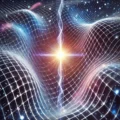Pound-Rebka Gravitational Redshift Test (1959)
Standard Interpretation
Purpose:
To verify the gravitational redshift predicted by General Relativity—i.e., that light loses energy (frequency decreases) climbing out of a gravitational well.
Method:
Using the Mössbauer effect for extremely precise gamma-ray spectroscopy, photons emitted from an iron-57 nucleus at the bottom of Harvard’s Jefferson Tower were detected at the top. A Doppler shift was applied via motion to cancel the gravitational redshift and achieve resonance absorption.
Result:
- A redshift in frequency matching General Relativity’s prediction (Δf/f = gh/c²) was observed.
- The experiment confirmed gravitational time dilation to high precision.
Conventional Conclusion:
The results validated Einstein’s General Relativity prediction: gravitational potential affects the frequency of light, interpreted as either energy loss during propagation or slower clock rates deeper in gravitational wells.
Charge Admittance (CA) Reinterpretation
CA Principles Relevant Here:
- Lattice-Determined Field Propagation – The structured vacuum has localized impedance determined by gravitational stress, not a uniform space.
- Frequency-Tied Emission – Emission frequency is governed by local charge-lattice interactions (not intrinsic atomic constants alone).
- Propagation Conserves Frequency – Unlike GR, CA treats photon propagation as frequency-stable; redshifts arise due to differential emission and absorption conditions, not en route “stretching.”
CA interpretation:
- Why the Shift Happens:
- Source and detector are in regions of different lattice impedance due to gravitational potential.
- Atomic transition energy is governed by the local admittance profile, which is lower at the bottom of the gravitational well.
- Light is emitted at a lower frequency at the bottom—not because it’s “redshifted” in transit, but because the emitter’s transition frequency is shifted.
- The photon maintains its frequency during propagation; the mismatch arises at detection, where resonance conditions differ.
- No “Stretching” in Transit:
- There is no need to invoke curved space-time or energy loss during propagation.
- Instead, the redshift reflects inertial admittance gradients within the structured vacuum medium.
- Frequency-Differentiated Emitters:
- CA implies emitters and detectors measure different eigenfrequencies due to local variations in charge-lattice coupling, not relativistic time dilation.
Charge Admittance (CA) Reinterpretation
- Challenges:
- The shift is not due to space-time curvature altering photon behavior en route, but due to localized source-detector impedance asymmetry.
- Questions the literal interpretation of “time dilation” as an absolute effect; CA views it as a measured outcome of varying local field dynamics.
- Validates/Extends:
- CA reproduces the magnitude and sign of the redshift, preserving empirical agreement.
- Opens new interpretive pathways for gravitational field structure as a material impedance gradient rather than a purely geometric distortion.
Implications for Further Research
- Experimental Predictions:
- CA suggests that non-gravitational impedance variations (e.g., thermal, material, or Casimir-like boundary conditions) could mimic gravitational redshift signatures.
- Time/frequency shifts might also arise near strong electric or magnetic fields, if they perturb lattice impedance—providing new avenues for tabletop tests.
- Observational Consequences:
- Astrophysical redshifts might include non-GR components, especially in regions with non-uniform vacuum polarization (e.g., near strong EM sources).
- Emission spectrum reanalysis across gravitational gradients could reveal frequency stratification tied to lattice response, not just GR potential wells.
